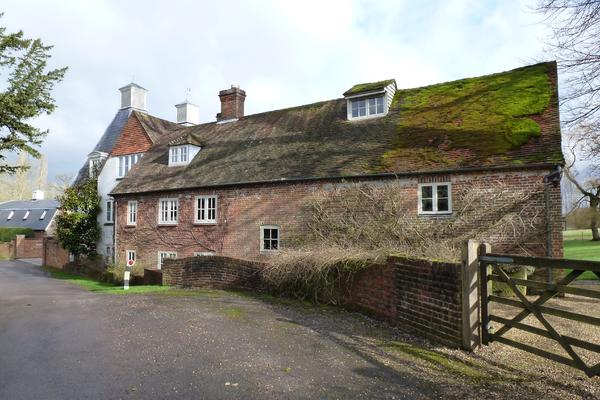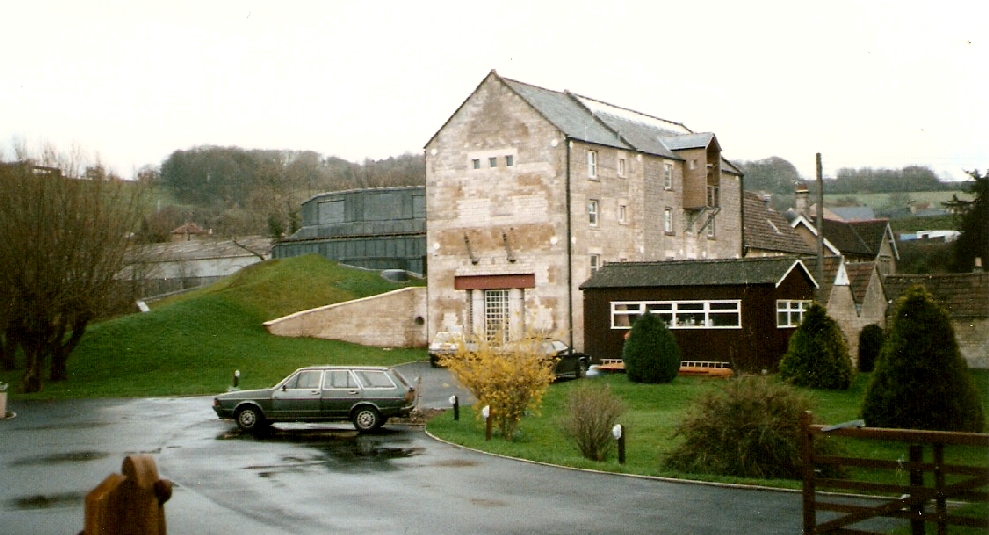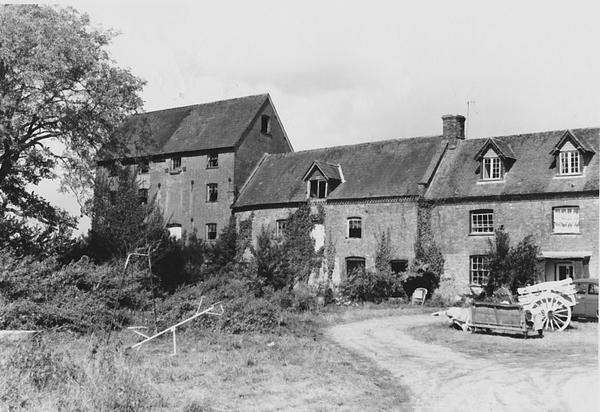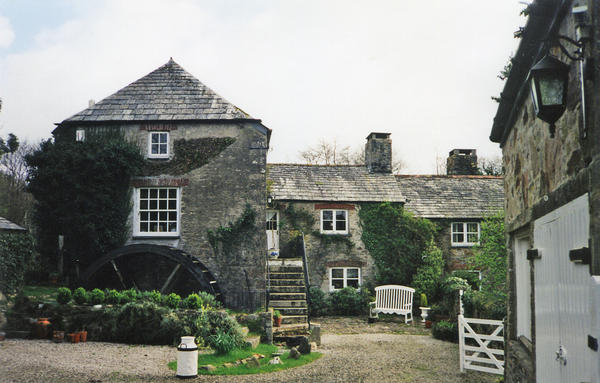| This article was written for us by the late Martin Bodman in 2020. |
| A field marshal, two rock stars and a cartoonist: what do these individuals have in common? They all owned or own watermills in southern and south-western counties of England. |
 |
| Isington Mill, Hampshire – HMGC-RA-063 |
| The Field Marshal was Bernard Montgomery (November 1887 – March 1976). Marlborough had been given Blenheim Palace for his victory at Blenheim but the victor of El Alamein lived in another era – the age of the common man. He bought Isington Mill at Bentley (SU 755427) in Hampshire in 1948, but the local council refused him permission to bring in builders for conversion to a residence. Monty threatened to park his caravans in an adjacent field. The media might have a field day: authority yielded and he went ahead with the house conversion. The meadow became a huge lawn where every blade of grass was regulation height and moles were forbidden.There was a mill here in the late seventeenth century, powered by the waters of the River Wey. Today the mill complex includes two converted hop kilns. One of two waterwheels survives. The Montgomery family sold the mill in 1989 and Kenneth Major, as architect, together with millwrights Janes Ltd were appointed to further restore the mill and its machinery. In 1994 the mill was grinding grain with a pair of burrstones powered by an undershot waterwheel. The mill, which was for sale in 1999 at £1.2m, is not open to the public. |
 |
| Front of Real World Studio, Box, Wiltshire, 1990. Rodhullandemu, CC BY-SA 3.0, via Wikimedia Commons |
| The singer, songwriter and former frontman for the progressive-rock band Genesis, Peter Gabriel (b February 1950), bought Box Mill (ST 8252 6889) in west Wiltshire in 1987. The three-storey mill, of local stone, had worked with five pairs of stones but the water power on the By Brook was not always adequate and in the late nineteenth century a steam engine was also employed, probably to work the roller plant then installed. At some time after Brunel’s Great Western Railway opened to Bristol, grain was brought to the mill from a siding close to Box Tunnel via an aerial ropeway. A sale of the freehold in 1937 divided the estate into several lots including a stone malthouse: Box Mill had been owned by a brewery company. Gabriel built a large extension to the property to house his recording studios – Real World Studios – which are in use today. |
 |
| Stanbridge Mill, Dorset – LOWE-1238 |
| Stanbridge Mill, Horton, (SU 0152 0901) on the River Allen, north of Wimborne Minster, in Dorset, was derelict in the 1950s. A four-storey building to house a roller mill – by E R & F Turner of Ipswich – had been added in 1892, worked by a low breast shot waterwheel 11ft 6in in diameter by 11ft breast, on a 4ft fall of water. The Allen is a chalk stream – a winterbourne – and flows can be low in summer, so this installation may not have been all that successful. By 1960 it seems the roller mill extension had been demolished. Dorset-born Greg Lake (November 1947 – December 2016) of rock group Emerson, Lake and Palmer, fell in love with the old mill and in 1977 offered the owner, Lord Shaftesbury, £77,000 for it. Lake converted the mill and adjoining millhouse into a residence and others have owned it since. It is Listed Grade II and retains its waterwheel, which is thought to be workable and much mill gearing is preserved behind a glass case. The mill gardens with watercourse are occasionally open to the public on Garden Open days. |
 |
| Addicroft Mill, Cornwall – MBRN-CPH-26 |
| Further west in the Lynher valley, in Cornwall, stands Addicroft Mill, (SX 3006 7291). It must have been sometime before 1981 when the cartoonist and illustrator Norman Thelwell (May 1923 – February 2004) bought the derelict property which was advertised as in ‘need of some attention’, to say the least. The mill and mill house form an L-shaped plan and are Grade II Listed. The three-storey mill, of slate-stone and granite rubble, with brick dressings was largely built in 1810. Its breast shot waterwheel by Jabez Buckingham, a millwright from nearby Northhill, was in working order in the 1990s and all the gearing survives together with a pair of French burrstones for flour milling and a pair of granite stones for grist. Thelwell wrote a book about the trials and tribulations of restoring the property, which he called ‘Penruin’, into a home – ‘A Millstone Round My Neck’, with charming black and white illustrations by the author. The mill, which had a two-storey extension built in 1987, is not open to the public. |
| Sources include: Hampshire Mills Group, The Mills and Millers of Hampshire, Vol. 3 – North & East, 2013 W F Deedes, Brief Lives, Pan Macmillan, 2013 Tom Carver, Where The Hell Have You Been?, Short Books, 2010 Box People and Places – online newsletter 27, Spring 2020 http://realworldstudios.com/ British Listed Buildings online Mills Archive online The Dorset Rambler online Norman Thelwell, A Millstone Round My Neck, Eyre Methuen, 1981 |
